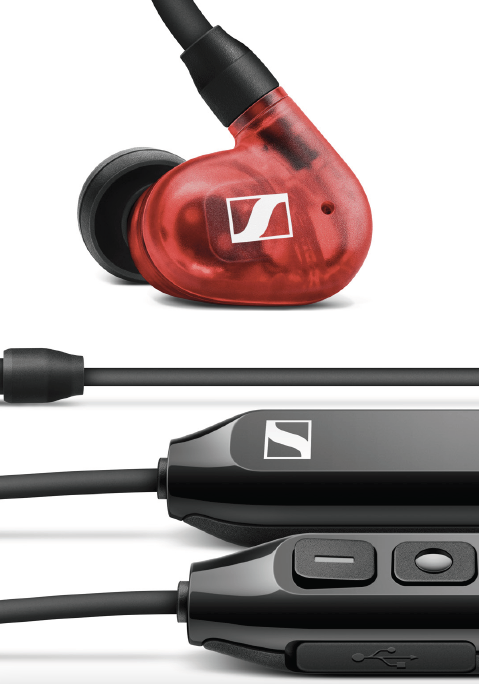During all my years mixing live sound, it’s inevitable that I should acquire a couple of sets of custom IEMs along the way. I am often asked by bands and artists that are thinking about IEMs but don’t want to shell out the best part of a grand for something they may not like or can’t get used to. The simple answer has always been, ‘you get what you pay for’, but that might be about to change. I was recently fortunate enough to get my hands on Sennheiser’s new IE 100 PRO IEMs.
In the box are a set of ears and a single cable to connect the two together, which features a Bluetooth unit as well as a small controller with on/off, connect, volume controls and a microphone, so you can use this with another Bluetooth device should you wish.
You also get a separate cable so an engineer or musician can use the earpieces in a more traditional manner, say for instance from a mixer or an IEM body pack. There is also a handy little packet with a cleaning tool and a bunch of alternative buds to accommodate different ear sizes.
Now bearing in mind these units are the IE 100s, the entry level in a series which already features the IE 400 and IE 500. I can’t say I was expecting too much, especially when they arrived already attached to the Bluetooth adapter.
All preconceptions aside, I thought I’d start as they arrived, so I paired them up to my iPhone and stuck a bit of Pink Floyd on. To my surprise they didn’t sound half bad. I had to search around for the adapter you now need to plug up any audio output from a modern iPhone.
I will apologise in advance for this, as it’s something I rarely do on account of the rather poor quality of the conversion and amp stage in modern phones, and unsurprisingly my near £1,000 of custom-built IEMs sounded uncomfortable. One nil to Mr. Sennheiser.
Just to make sure it was the iPhone’s internals that were at fault here, I refitted the earpieces onto the cable and plugged them straight into the iPhone’s little adapter, and low and behold there was a significant drop in quality from that experienced with the Bluetooth adapter. So far from being a sales gimmick or a bonus toy to sway your buying decision, it actually works, and works well.
So to see if this could possibly be the device to accustom potential users to long periods of IEM wearing, I fitted the earpieces back up to the Bluetooth adapter and stuck it on charge.
After homeschooling was over, I took the opportunity to take a long walk down by the canal and regain my sanity, along with some of that contracted data allowance that never gets used.
I could also take the opportunity to revise a couple of my playlists and reconnect with some past memories, as well as checking out some of the new artists the Headliner team have been interviewing and writing about.




